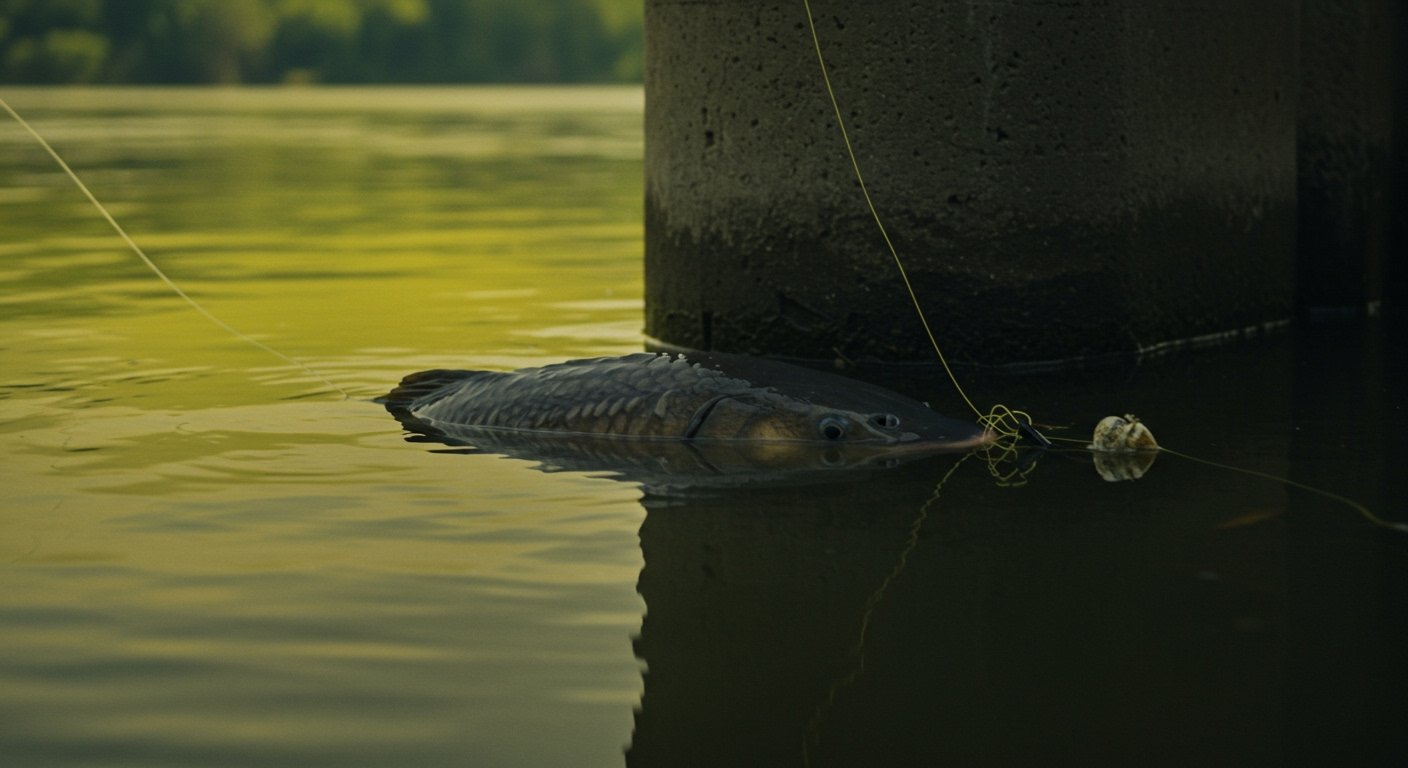PORTLAND, OR – As summer ushers in peak outdoor recreation season along the Columbia River, a prominent clean-water advocacy group is issuing a critical reminder to the public: consumption of certain fish species near the historic Bonneville Dam remains unsafe due to persistent contamination by toxic chemicals.
Columbia Riverkeeper, a leading voice for the health of the vital waterway, highlights that some fish harvested from specific stretches of the river contain high levels of cancer-causing polychlorinated biphenyls (PCBs).
Understanding the Contamination Zone
The area of concern is precisely defined, spanning approximately one mile upriver from the Bonneville Dam. This stretch extends specifically to Ruckle Creek, a location with a documented history tied to industrial and military activities along the river.
The contamination originates from a site historically utilized by the U.S. Army Corps of Engineers. Records indicate this site was used for chemical storage and waste disposal activities dating back to the 1930s. Over decades, hazardous substances, including PCBs, leached into the surrounding environment, entering the river system and accumulating in the aquatic food chain.
Affected Species and Health Risks
Importantly, not all fish species in the area are equally impacted. The primary concern lies with resident fish species – those that live their entire lives, or a significant portion of them, within the affected zone. These include common species popular with recreational anglers, such as carp, bass, and sturgeon.
These resident fish have accumulated PCBs in their tissues over time. PCBs are persistent environmental pollutants known for their toxicity and classification by health authorities as probable human carcinogens. Exposure through contaminated fish consumption can pose long-term health risks, including potential links to cancer and other adverse health effects.
In contrast, migratory fish species that pass through the area are considered safe for consumption from this specific stretch of the river. This distinction is crucial for the public to understand. Species like salmon, steelhead, and shad, which spend significant time in the ocean or upstream reaches before briefly transiting the dam area during their migration, do not accumulate pollutants from the Ruckle Creek site to the same degree as their resident counterparts.
Advocacy Efforts Drive Action
The persistence of this contamination issue has spurred significant advocacy efforts. Groups like Columbia Riverkeeper, represented by senior community organizer Kate Murphy, have been instrumental in raising public awareness and pushing for accountability and cleanup.
These advocacy efforts, often in partnership with indigenous communities with deep historical ties to the river, such as the Confederated Bands and Tribes of Yakama Nation, have been crucial in pressuring federal agencies and driving action towards remediation of the polluted site.
The combined pressure from environmental watchdogs and tribal nations has been a key factor in the site’s designation. It has since been officially listed as a Superfund site, a federal program administered by the Environmental Protection Agency (EPA) aimed at cleaning up the most complex uncontrolled or abandoned hazardous waste sites in the country. This listing places the cleanup efforts under the direct oversight of the EPA, initiating a multi-stage process typically involving investigation, feasibility studies, and eventually, remediation activities.
Challenges to Cleanup
Despite the Superfund listing and EPA oversight, the path to comprehensive cleanup is fraught with challenges. A significant hurdle currently highlighted by those involved in the process is the lack of sufficient data needed to develop a thorough and effective cleanup plan. Understanding the full extent of the contamination, its migration pathways, and the specific risks requires extensive scientific investigation.
The absence of this crucial data can delay the planning and implementation phases of the remediation process, leaving the community and the environment exposed to the lingering threat of PCBs for longer than desired.
Remaining Vigilant
The reminder from Columbia Riverkeeper comes at a vital time as warmer weather draws more people to the Columbia River for fishing and other recreational activities. Public awareness of consumption advisories is paramount to protect human health.
While the Superfund process is underway under EPA’s direction, the historical contamination from the U.S. Army Corps of Engineers’ activities dating back to the 1930s continues to impact the ecosystem.
Members of the public seeking more detailed information regarding specific fish consumption advisories for the Bonneville Dam area, including which species are safe and recommended limits for others, are advised to consult official sources. Additional details are available on the Oregon Health Authority website, which provides updated guidance based on scientific assessments of contaminant levels in fish tissues.
The ongoing situation underscores the long-term consequences of historical pollution and the critical need for continued vigilance, robust scientific investigation, and collaborative efforts between government agencies, advocacy groups, and tribal nations to restore the health of the Columbia River for current and future generations.



















